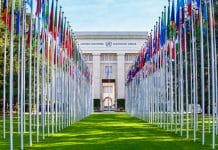By Evelyn S. Devadason,
There are many controversies surrounding the Regional Comprehensive Economic Partnership (RCEP), an ASEAN-driven initiative launched in 2012 and scheduled to be signed by the end of 2020. Critics of the RCEP defend their position on grounds of economic marginalization of vulnerable workers in specific industries and countries. There is also unequivocal support from within the participants, witnessed by India withdrawing from the negotiations in May 2020.
A big question heading into the RCEP debate is: Does RCEP have the capacity to deliver significant gains for ASEAN, and be a game-changer for the region?
The answer to the above question on the benefits of RCEP to ASEAN comes down to two key factors – the ‘mega’ benefits and the ‘depth and breadth’ of the agreement.
The RCEP itself is considered a ‘mega’ FTA as it includes a large number of participants [ASEAN+5 (China, Japan, South Korea, Australia and New Zealand) or 15 countries] including major economies in Asia, and if formed, becomes the largest global alliance (combined market size of 32 per cent of world GDP, 47 per cent of global population and 30 per cent of global trade and investment). On the flip side, some argue that the RCEP is nothing than a liberal Comprehensive and Progressive Transpacific Partnership (CPTPP), as it is limited in its scope, and it is institutionally weak since it follows the ASEAN’s norms of consensual decision-making and mutual noninterference in member states’ domestic affairs.
The issue of ‘mega’ benefits of RCEP is however a completely different story. It relates closely to the depth of the agreement. While the expected benefit margins of RCEP on ASEAN’s trade have been popularized, several caveats should be borne in mind when considering those benefits. They are explained along four key points, as detailed below.
First, higher utilization of tariff preferences. At present, the uptake of tariff preferences in ASEAN is low due to the low margins of preference. Further, different tariff cuts, different tariff timelines and multiple rules of origin in the ASEAN+1 FTAs have burdened trade. The single framework of RCEP is therefore expected to mitigate those effects and reduce trade costs. This however can only be realized with feasible levels of tariff elimination (less carveouts and negative lists of important tariff lines) and consolidation of multiple rules, where the cumulative rules must be manageable by firms.
Second, provision of better market access. With limited intra-ASEAN trade, and given that 65 per cent of ASEAN’s trade is with the RCEP countries, the extension of ASEAN to RCEP appears a natural partnership. In fact, the ASEAN-China Free Trade Agreement (ACFTA) has been cited to have provided the greatest positive impact on ASEAN among the other plus-one agreements, and all ASEAN members have now already established deep trade relations with China. That said, some argue that the RCEP is none other than a passage for enhancing the ‘China factor’ in the region, plausibly at the expanse of ASEAN.
Third, scope for deepening supply chains. Intra-RCEP exports of capital and intermediate goods have grown at 40 per cent per annum compared with 16 per cent for intra-ASEAN exports since 1995. The dominance of capital and intermediate trade flows in RCEP does not only suggest that the manufacturing value-chain of ASEAN is linked to the RCEP members, but also reflects the supply chain connectivity between China, Japan and South Korea (CJK). Worth noting is that, the promises of a bigger payoff in terms of supply chain connectivity is not guaranteed by a single framework. Vertical foreign direct investment and market access for investments and services are both needed for further deepening supply chains in this partnership.
Fourth, scope for regulatory cooperation. Given the under performance of ASEAN in the reduction of trade transaction costs, it is anticipated that ASEAN best move ahead on tackling trade costs through regulatory convergence in conformity assessment procedures with important trading partners in RCEP. The reality of regulatory convergence, however, ultimately depends on the political will of the participants to undertake domestic reforms. Without that, it would not be possible to streamlining those procedures across the region. Importantly, all participants need to agree to a common base of standards that is minimum yet acceptable, and the bar should not be set to low that it defeats the very purpose of narrowing those differences.
Apart from the issues related to depth of the integration, RCEP is criticized for lacking breadth, given its lackluster in content; it does not include provisions on labour and environmental standards (no specific chapters), does not include disciplines on state-owned enterprises (SOEs) and is limited on its provisions related to investment and services, among others. Though these elements are important for establishing a high-quality agreement and promoting fair trade, the omission of these contentious provisions at this stage seems logical as there are already potential difficulties to conclude the RCEP negotiations even on other areas.
To date, the diverging projections on the impact of RCEP on ASEAN simply reflect the difficulty in measuring economic outcomes of mega agreements. Most of the existing modelling results of the RCEP, somewhat based on assumptions of ‘deep’ integration of the plus-one free trade agreements (FTAs), produced the expected conclusion of asymmetric gains for the ASEAN member countries. In any case, disproportionate gains from FTAs are inevitable.
For substantive (or ‘mega’) gains to be realized by ASEAN as a bloc, the RCEP needs to go beyond the mere consolidation of the plus-one agreements. Improving market access and increasing regulatory compatibility should be the underlying fundamentals of this extended framework under RCEP. Without progress in those two areas, ASEAN would fail to achieve great strides in advancing the status quo of trade integration.
If negotiated well, RCEP has the potential to be a game-changer for ASEAN. To broaden the horizons beyond ASEAN, an agreement (or single framework) of this kind is still better than nothing!
Evelyn S. Devadason is a Professor at the Faculty of Economics & Administration, University of Malaya. She is also the Vice President of the Malaysian Economic Association (MEA). She currently serves as an Associate Editor to the International Journal of Social Economics and as a member to the Editorial Board of the Journal of Contemporary Asia.









